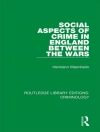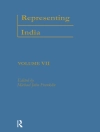In
Who Is Knowledgeable Is Strong, Cyrus Schayegh tells two intertwined stories: how, in early twentieth-century Iran, an emerging middle class used modern scientific knowledge as its cultural and economic capital, and how, along with the state, it employed biomedical sciences to tackle presumably modern problems like the increasing stress of everyday life, people’s defective willpower, and demographic stagnation. The book examines the ways by which scientific knowledge allowed the Iranian modernists to socially differentiate themselves from society at large and, at the very same time, to intervene in it. In so doing, it argues that both class formation and social reform emerged at the interstices of local Iranian and Western-dominated global contexts and concerns.
विषयसूची
Acknowledgments
Introduction
Part I. Science and the Formation of the Modern Iranian Middle Class, 1900-1950
1. The Historical Background
2. The Cultural and Discursive Dimensions
3. The Economic Dimensions
Part II. Medicalizing Modernity: Interactions between the Biomedical Sciences and Modernity in Iran, 1900-1950
4. The Dangers of Modernity: Neurology, Psychiatry, and the Effects of Modern Technology and a Modern Economy
5. Biopower: Hygiene, Eugenics, Genetics, and Iran’s Double Demographic Problem
6. The Self-Reliant Personality: Psychology, Pedagogy, and the Problem of Willpower
Conclusion
Appendix. First-Time Advertisements by Physicians in the Tehran Daily Ettelaaynat, 1927-1939
Notes
Select Bibliography
Index
लेखक के बारे में
Cyrus Schayegh is Assistant Professor at Princeton University.












